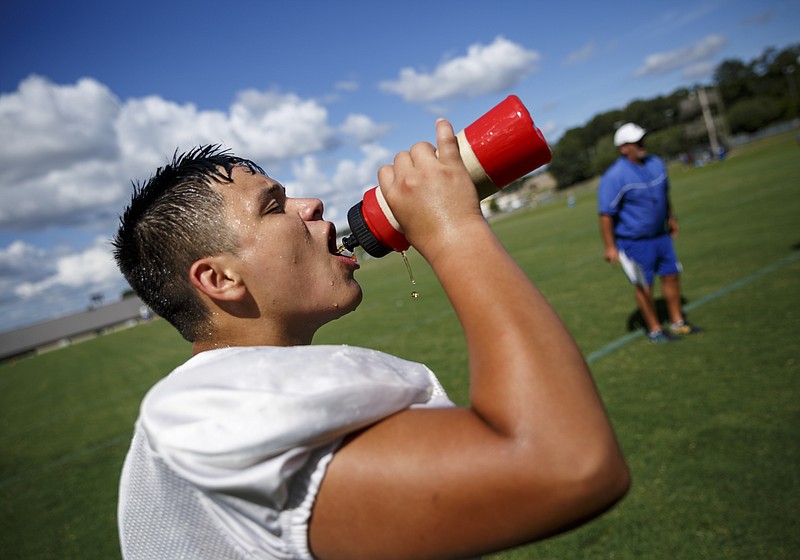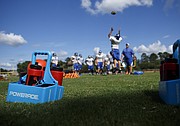The last time he saw anybody chugging salt tablets, Mark Mariakis and his teammates were partaking under the watchful eye of legendary East Ridge High School football coach Raymond James.
"I haven't seen anybody do it since I started coaching," said Mariakis, a veteran coach entering his first season in charge at Chattanooga Christian.
James also had a concoction the players called "bug juice" that probably still gives Mariakis shivers.
"It was Kool-Aid and a bag of salt mixed in water," he recalled, "and probably stirred up with a manager's or coach's hand."
In view of today's technology, salt tablets and bug juice are like relics long ago relegated to the Smithsonian. They've been replaced with devices to measure the heat index, sports drinks intended to replace electrolytes, pickle juice, mustard and, of course, water.
Tyner Academy coach Wayne Turner has yet to succumb to joining the cellphone generation, but the veteran coach has entered the technology age - he has a push-button telephone handset in his office, a computer at his desk and a hand-held device to check the heat index.
"What do I need with a cell phone? My assistant coaches all have them," he said. "Now this other little box - got to have that. Take it out with me every day and use it before practice, and then about every 30 minutes after that."
Both GHSA and TSSAA rules require teams to monitor the heat index and have specific guidelines regarding practices in extreme temperatures.
Turner, another of those from the salt tablets era, also keeps pickle juice handy, though many of his players are keener on drinking water. Turner swears by the pickle juice, which he believes is quite effective at stopping or even preventing cramps.
Mariakis said during his time at northwest Georgia's Ridgeland High School - he was head coach there from 2004 to '14 - that trainers would often give cramping players yellow mustard straight from a squeeze bottle.
"It looked like they'd just scarfed a hot dog," he said. "I guess it has a high sodium (and) potassium level."
Fluids are most important for anyone spending time in the summer heat and humidity. At Chattanooga Christian, trainers weigh players before and after practice each day to better measure fluid intake and loss.
Overall nourishment is also key. At Ooltewah, players report at 4 p.m. for meetings and weightlifting, and fruit - most often bananas and apples - is available from the time they walk in.
"And it's hard to beat peanut butter-and-jelly (sandwiches) for those who haven't eaten lunch," Owls coach Mac Bryan said. "Our touchdown club provides those things for us. It's just as important to eat as it is to hydrate, because food has as much to do with hydration as water."
In a perfect world, athletes would hydrate through the course of the week, taking in ample food and fluids.
"It's a different era," Bryan said. "Years ago people had no air conditioning, and they were used to the heat."
Adjusting over the summer - not just the preseason - is still important.
"That's the key," added Mariakis, whose team's daily workouts are on artificial turf, where heat builds up during long days in the sun.
"We're on the turf all summer long, and your body just acquires a tolerance for the heat. It's a matter of progressive conditioning."
Contact Ward Gossett at wgossett@timesfreepress.com or 423-886-4765. Follow him on Twitter @wardgossett.

